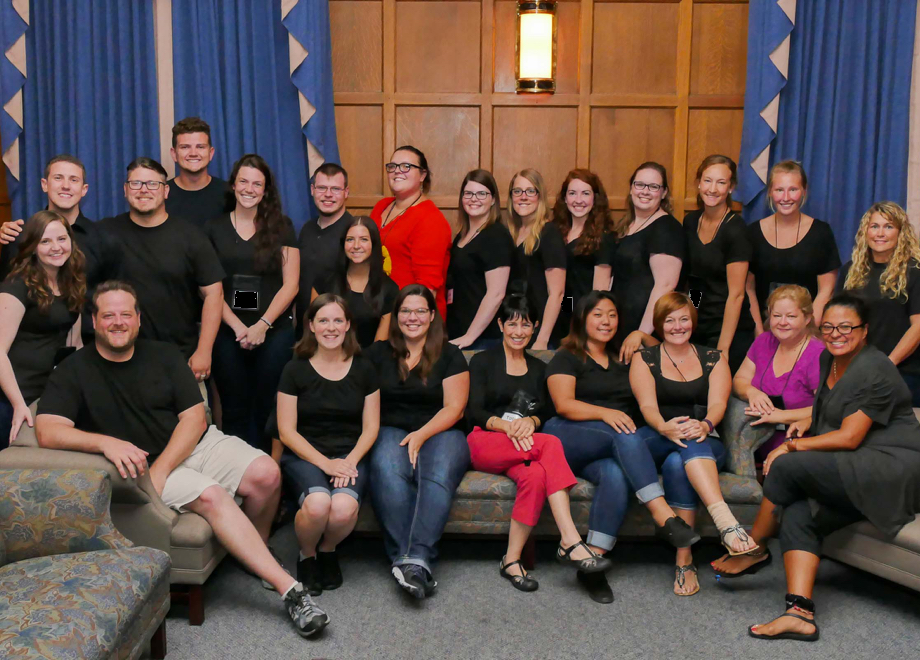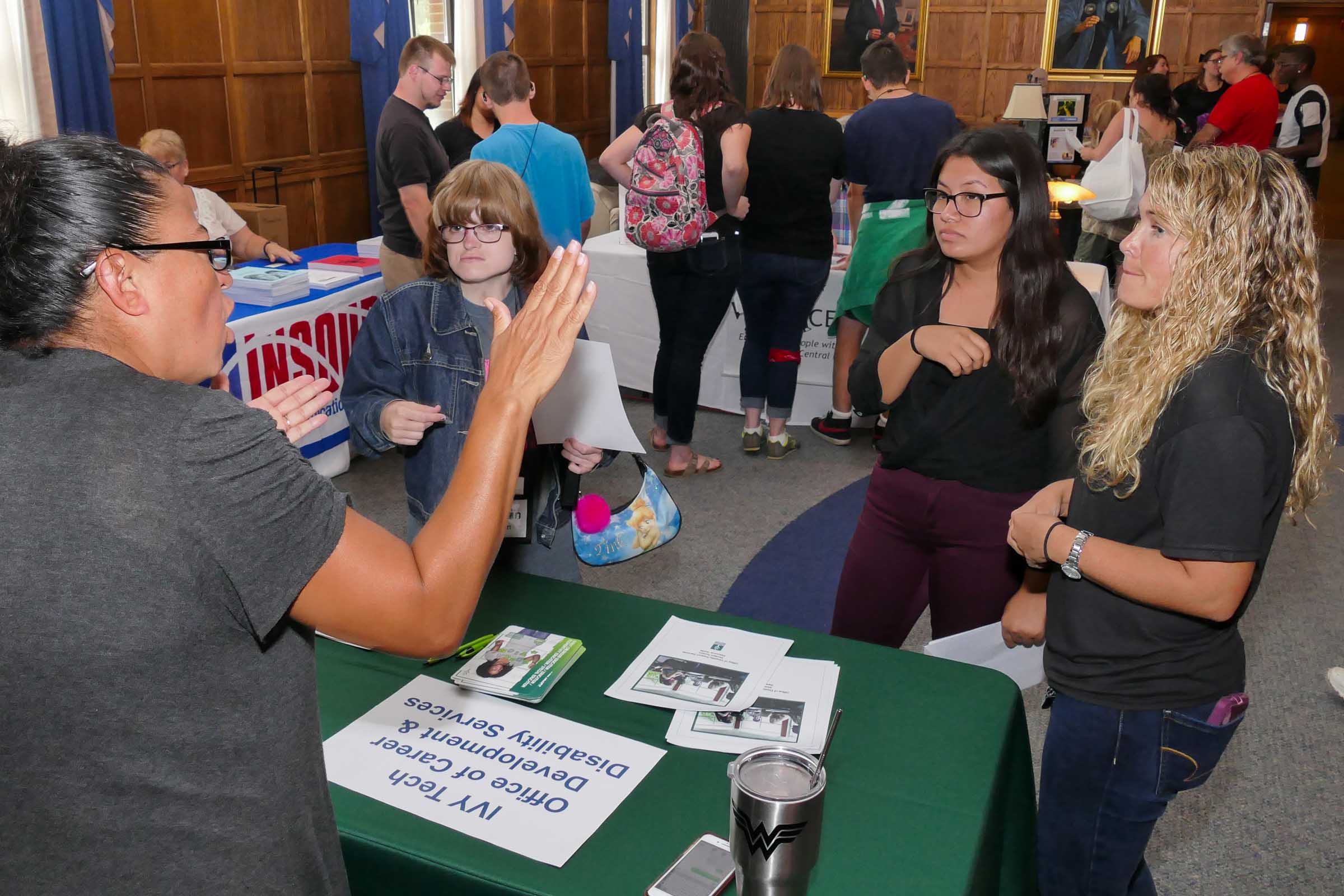Planning for the Future: A Report on the 2017 Transition Institutes
Mike Fagbemi, NCDB Transition Initiative Lead
November 2017
There is an old adage, “It takes a village to raise a child.”
If you are reading this article, it’s more than likely you play an integral role in the education of a child or young adult who is deaf-blind. Those of us involved in this work aim to:
- Support parents in being actively engaged in their child’s education.
- Support teachers in their use of the best strategies to teach these children who have such unique needs.
- Integrate best practices for children and youth with deaf-blindness into systems responsible for educating everyone.
These efforts, supported by technical assistance from the Deaf-Blind Network, are intended to increase the likelihood that each young adult will experience a successful life as they define it.
I am excited to say that this was a very busy summer for collaboration within the community of individuals focused on transition issues for young adults.There were two institutes, one hosted by the Alabama Initiative for Children and Youth who are Deaf-Blind and the other by the Indiana Deaf-Blind Services Project.
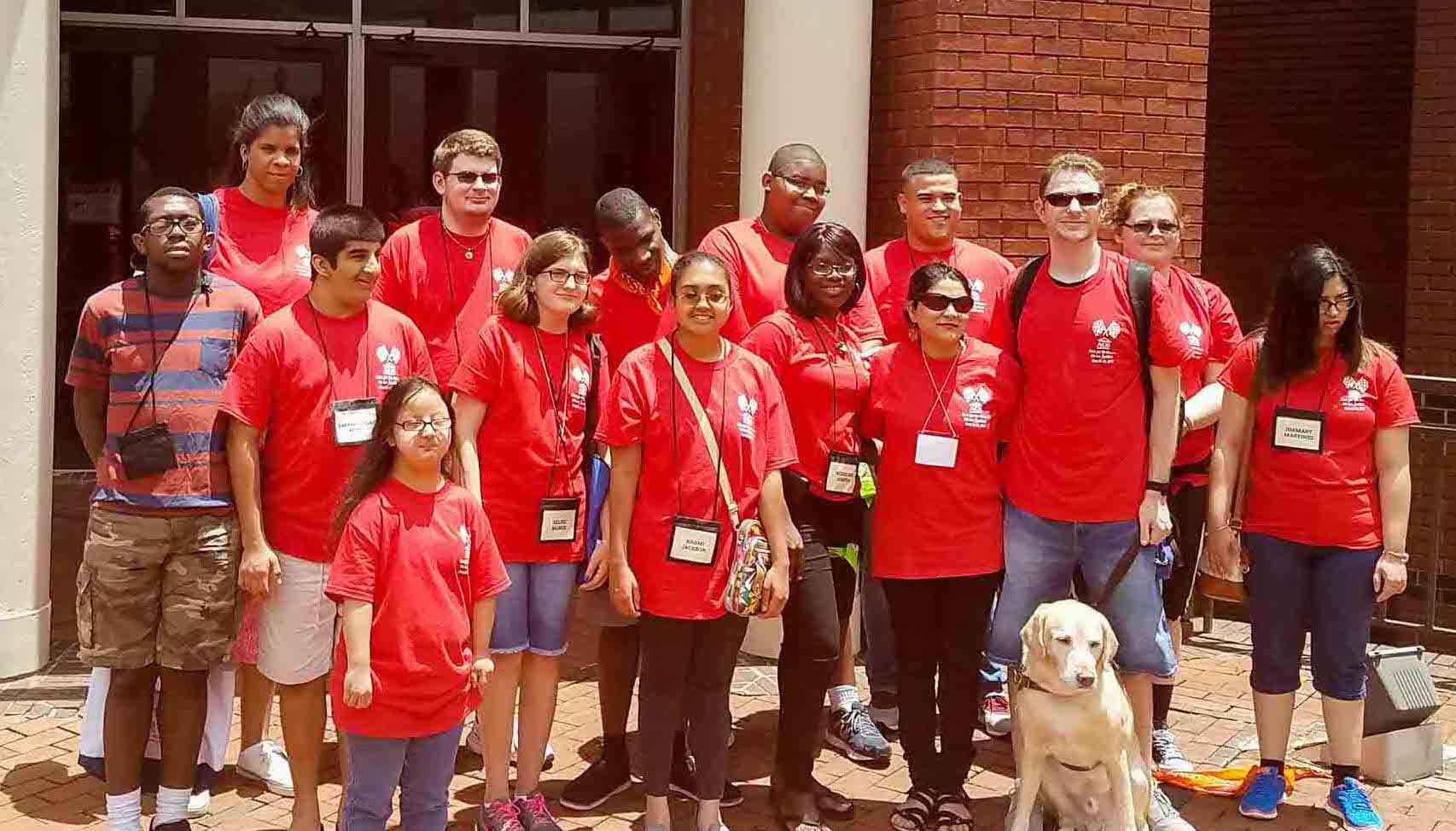
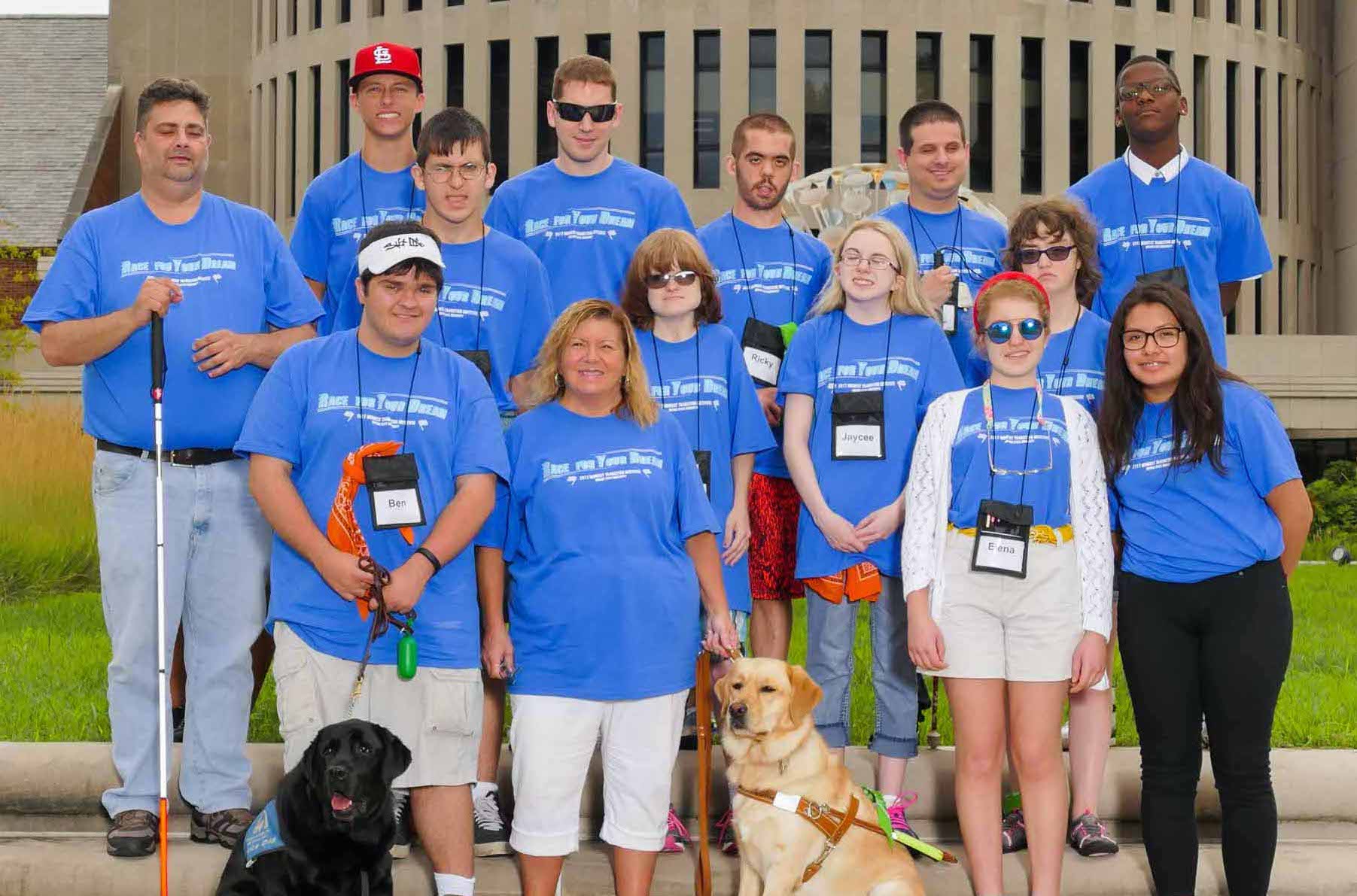
Southeast Institute
The Alabama Initiative for Children and Youth who are Deaf-Blind hosted—with the assistance of seven other state deaf-blind projects—the 17th institute for young adults and their families in the southeast region. The theme, Race for the Dream: We are limitless!, could not have been more true. The ten young adults who attended had an opportunity to network with peers, learn specific skills that self-determined people do, and learn how to apply those skills in school, home, and work settings. They were also introduced to Haptics, a form of non-verbal communication, that opened access to more environmental information than they have typically experienced. Envision a young adult who raises his hand in a large group setting and answers a question about self-determination. This young adult, through the Haptic exchange, not only gets direct feedback from the person who asked the original question, but also from his peers as they react with head nods or raise their hands to participate in the conversation. This new way of accessing information seemed to empower the participants and encouraged dialogue about how they might use it in other settings.
Perhaps the highlight of the weekend for every young person was the opportunity to experience a “hot lap” at the Talladega Speedway. This shared experience helped cultivate new relationships within the group. The young adults raced for their dreams, figuratively and literally. As one said, “College is important and finding a job, but I am glad we had fun stuff to do here, too.”
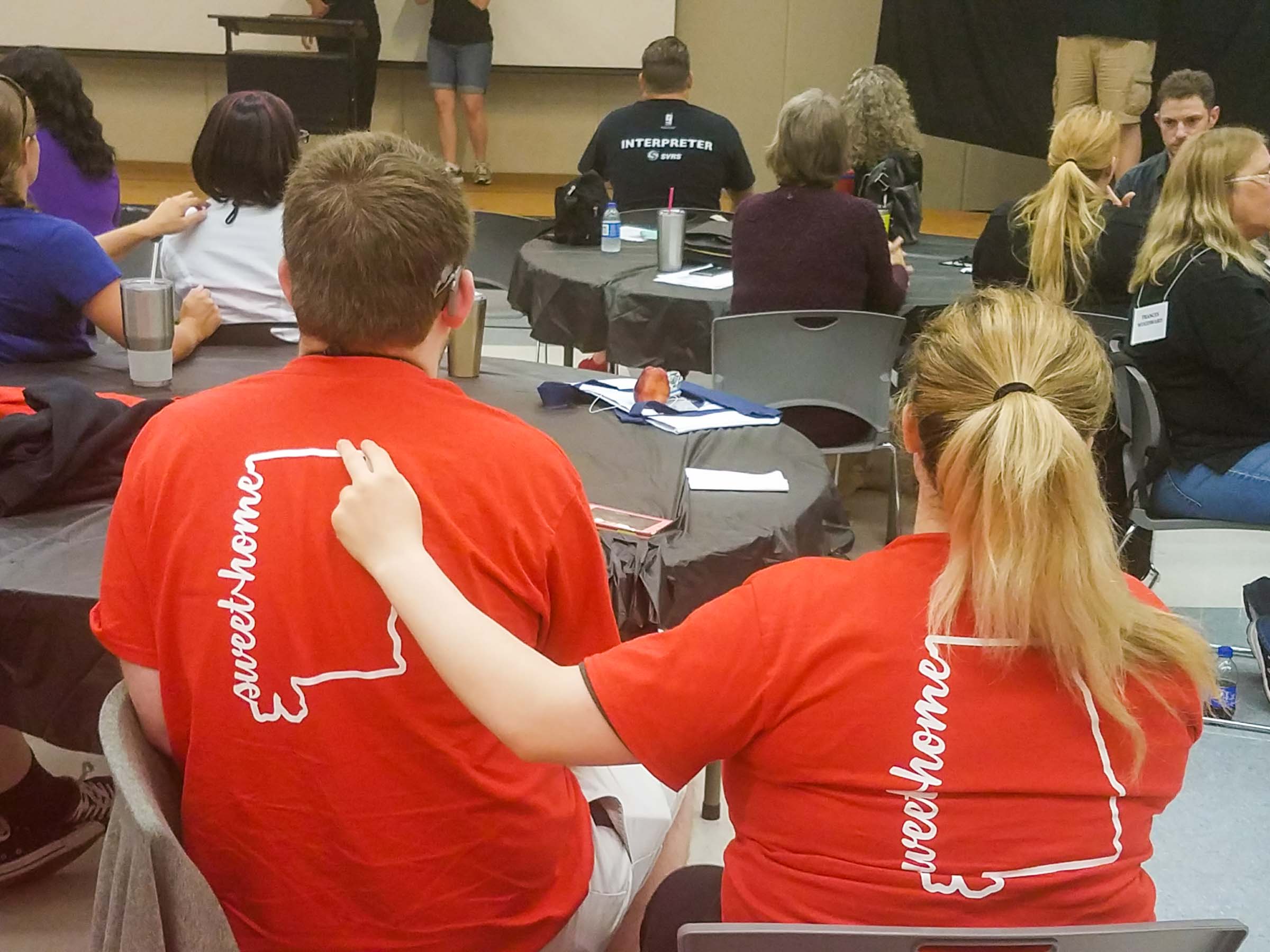

Midwest Institute
After attending two southeast regional institutes in the past, staff at the Indiana Deaf-Blind Services Project decided they were ready to launch a transition institute in the Midwest region. The theme, "Creating Opportunities for Tomorrow: Race for Your Dream," embodied the true spirit of the event. A diverse group of young adults, many with college and career aspirations, and some on a path of self-discovery, engaged in spirited discussions guided by two young adult mentors with college and career experience and supported by older deaf-blind professionals.
The mentors, all with varying levels of experience, honed the message of recognizing one’s own strengths and challenges, as well as the reality of adversity and what is needed to overcome it. One of the keynote presenters, a young adult who is employed by the Department of Defense, was instrumental in describing challenges related to access, accommodations, and acceptance in work and academic settings. Throughout the institute, the young adult participants learned useful strategies and challenged each other to adapt to societal obstacles and embrace perseverance.
A highlight of the institute for many was participating in a ropes course. Each willing participant had an opportunity to demonstrate teamwork and sportsmanship and take selfies for their growing social networks.
Last, but not least, these young adults were introduced to Haptics and the concept of support service providers (SSPs) for community access. Through the mentors they learned about the importance of these valuable resources for achieving independence. They left the institute armed with new information, momentum, and strategies to address their goals.
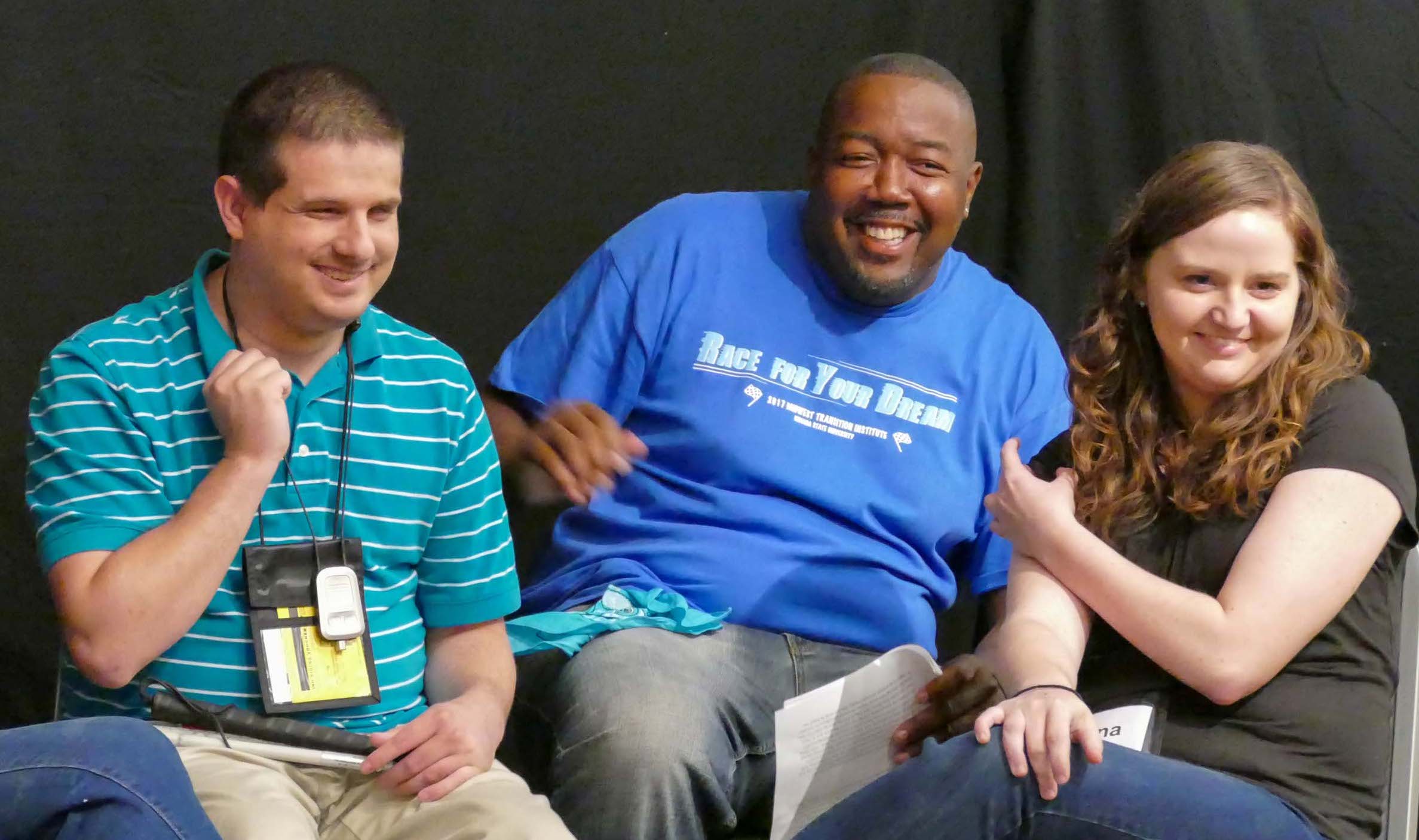
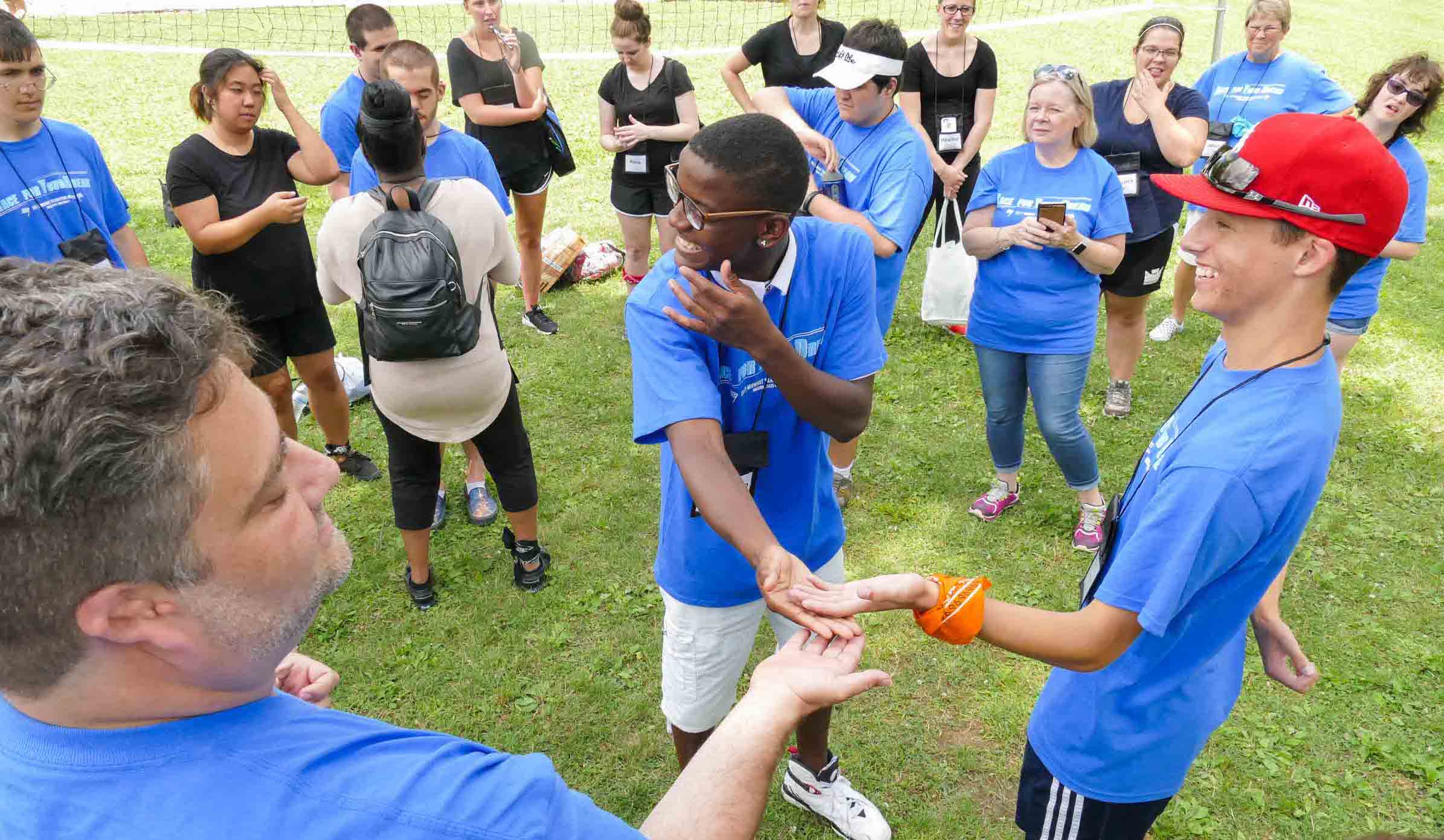
Commitment to Access
To provide the type of access young adults need to be successful, transition institutes require extensive collaboration among many individuals and agencies. I’m happy to say that in addition to attendance by the young adults and their families, both institutes were also attended by staff from vocational rehabilitation centers, students from higher education, Helen Keller National Center regional representatives, and interpreting students pursuing CEU credits by volunteering at an institute. Lastly, both institutes offered a resource fair where representatives demonstrated equipment that could be procured through the federal iCanConnect national equipment distribution program.
The transition institutes continue to provide a type of technical assistance that is unique and customized for young adults, aged 14 to 22, who are focused on college and career readiness and independent living, or are simply on a path of discovery and needing peers and mentors to provide guidance. The institutes are anchored to evidence-based practices in the areas of:
- Student-focused planning
- Student development
- Family engagement
- Interagency collaboration
- Program structure
Both institutes in the summer of 2017 provided unique and powerful opportunities for families and youth to build their capacity.
As we reflect on the successes and lessons learned from the 2017 institutes, many in the Deaf-Blind Network are already planning for future events. Stay tuned for announcements of future institutes.
